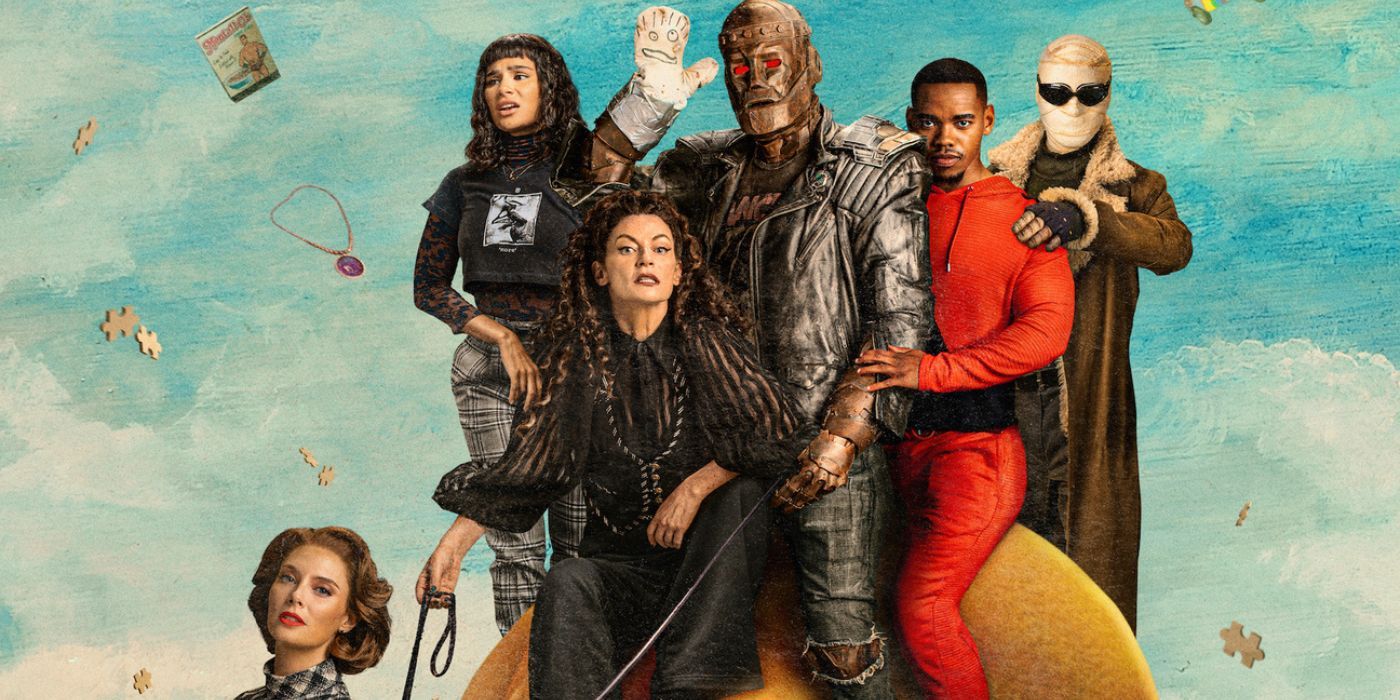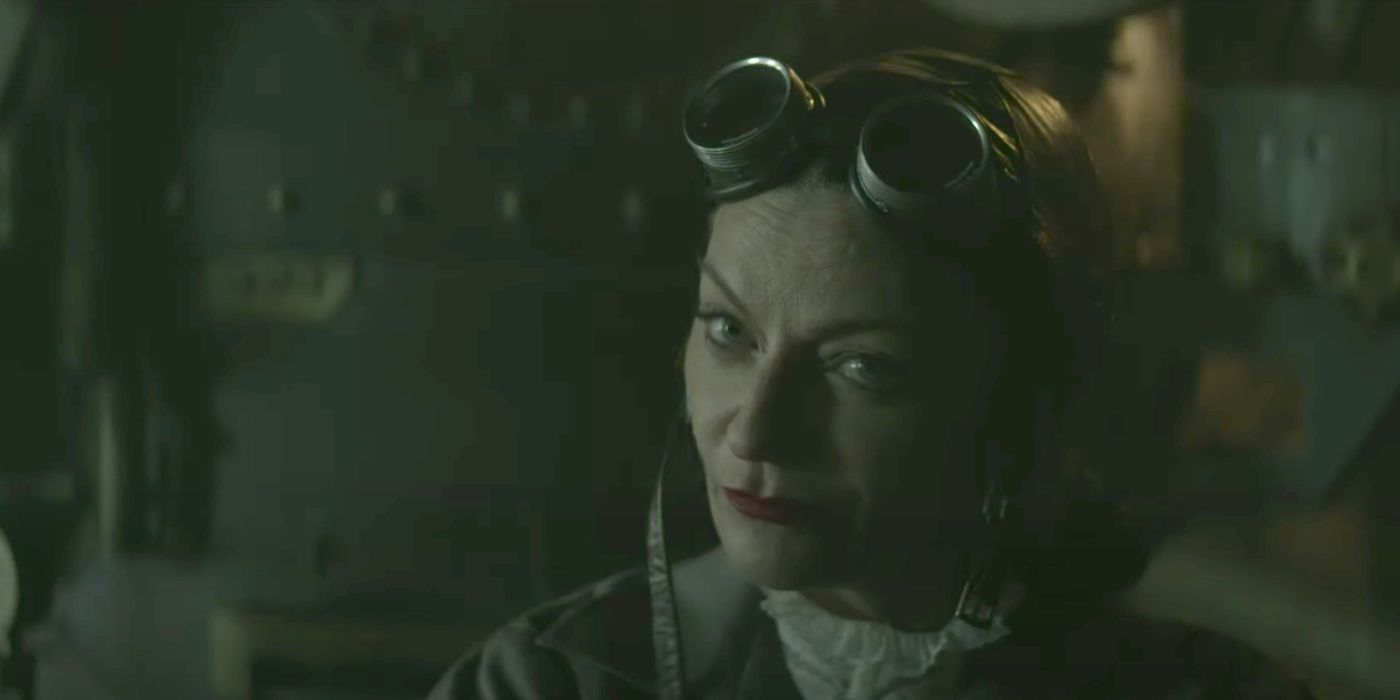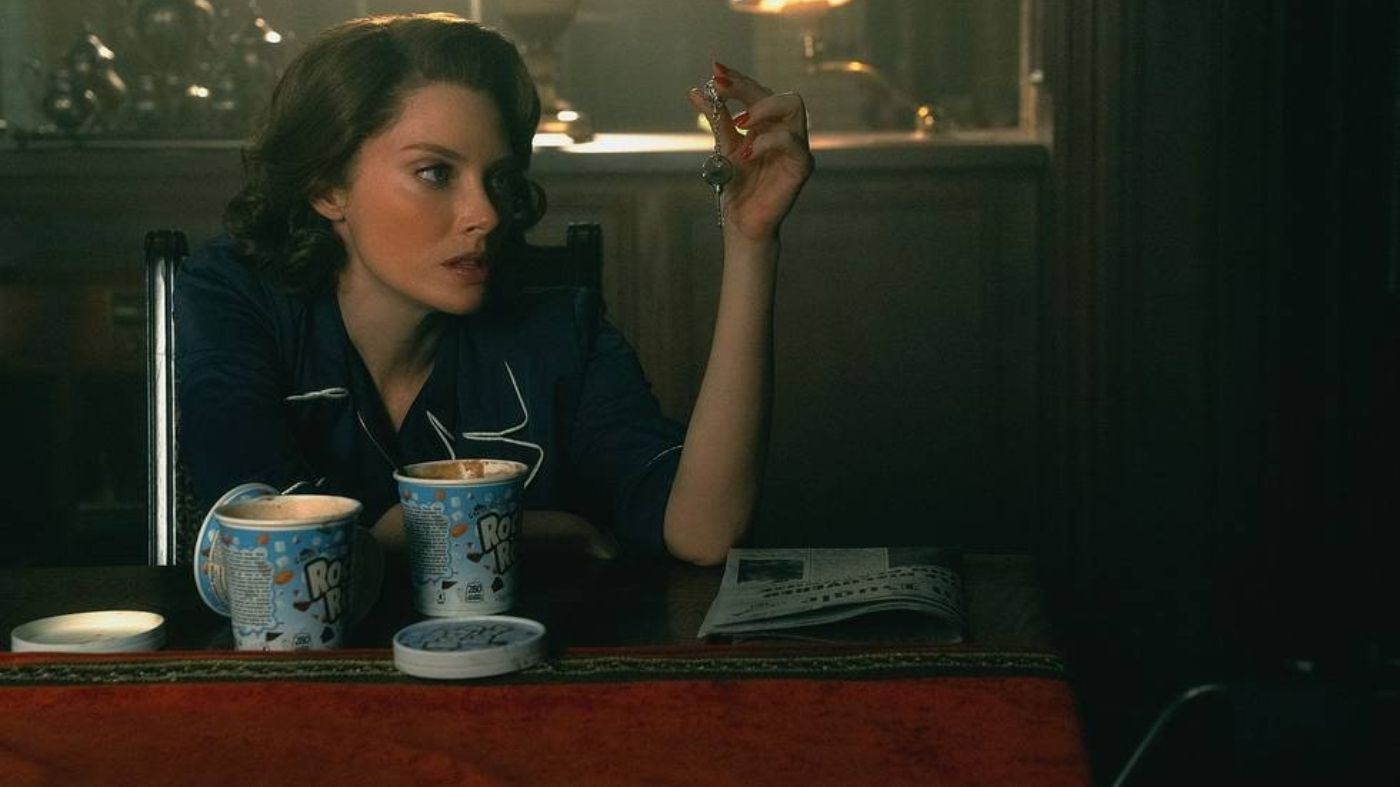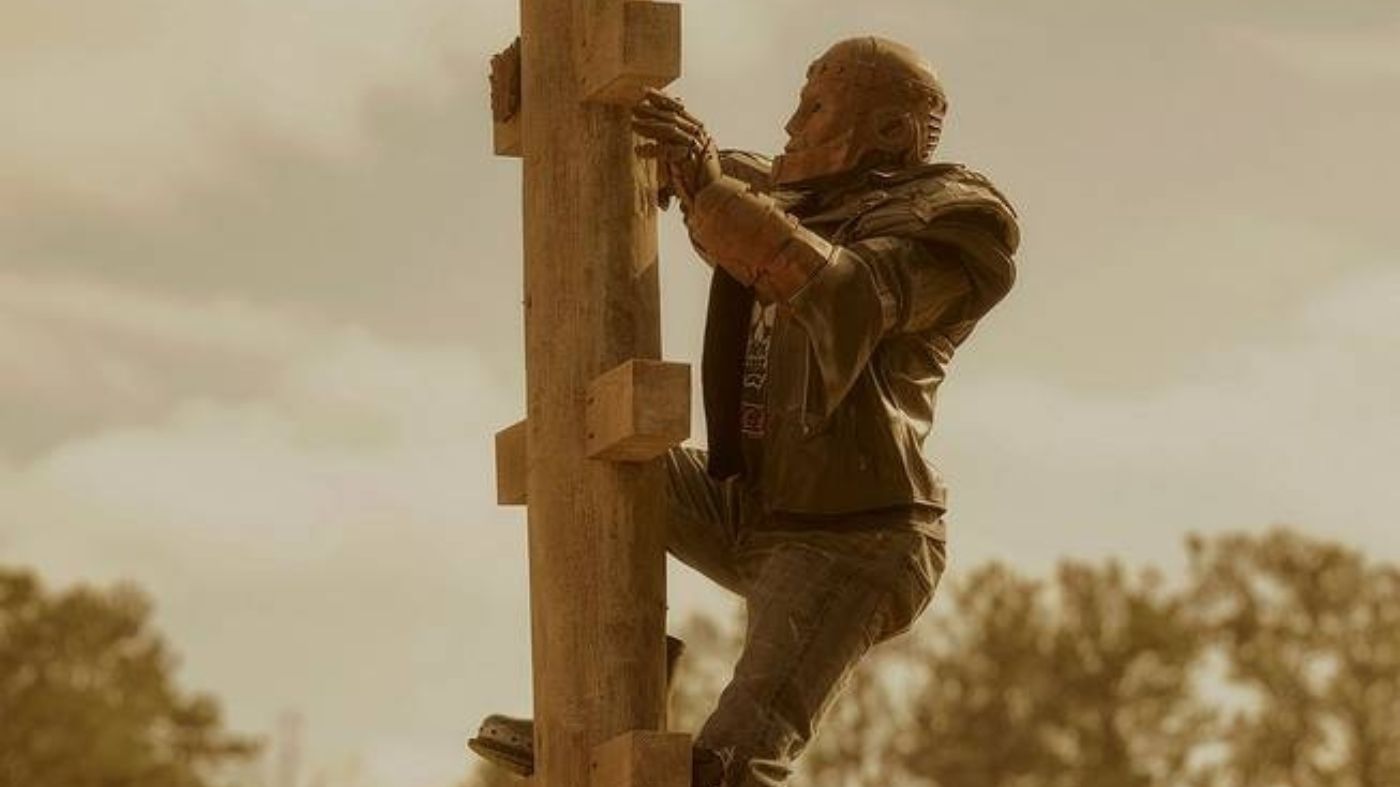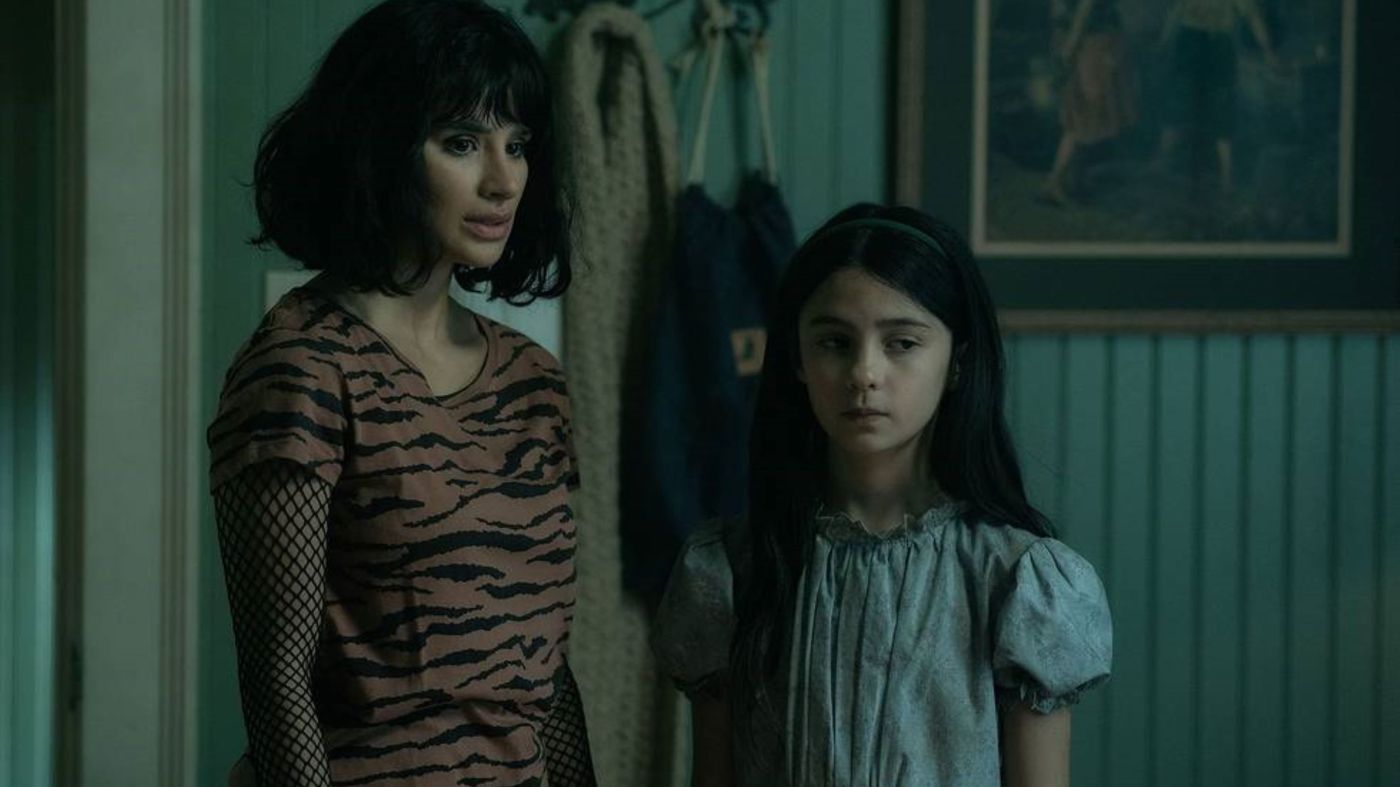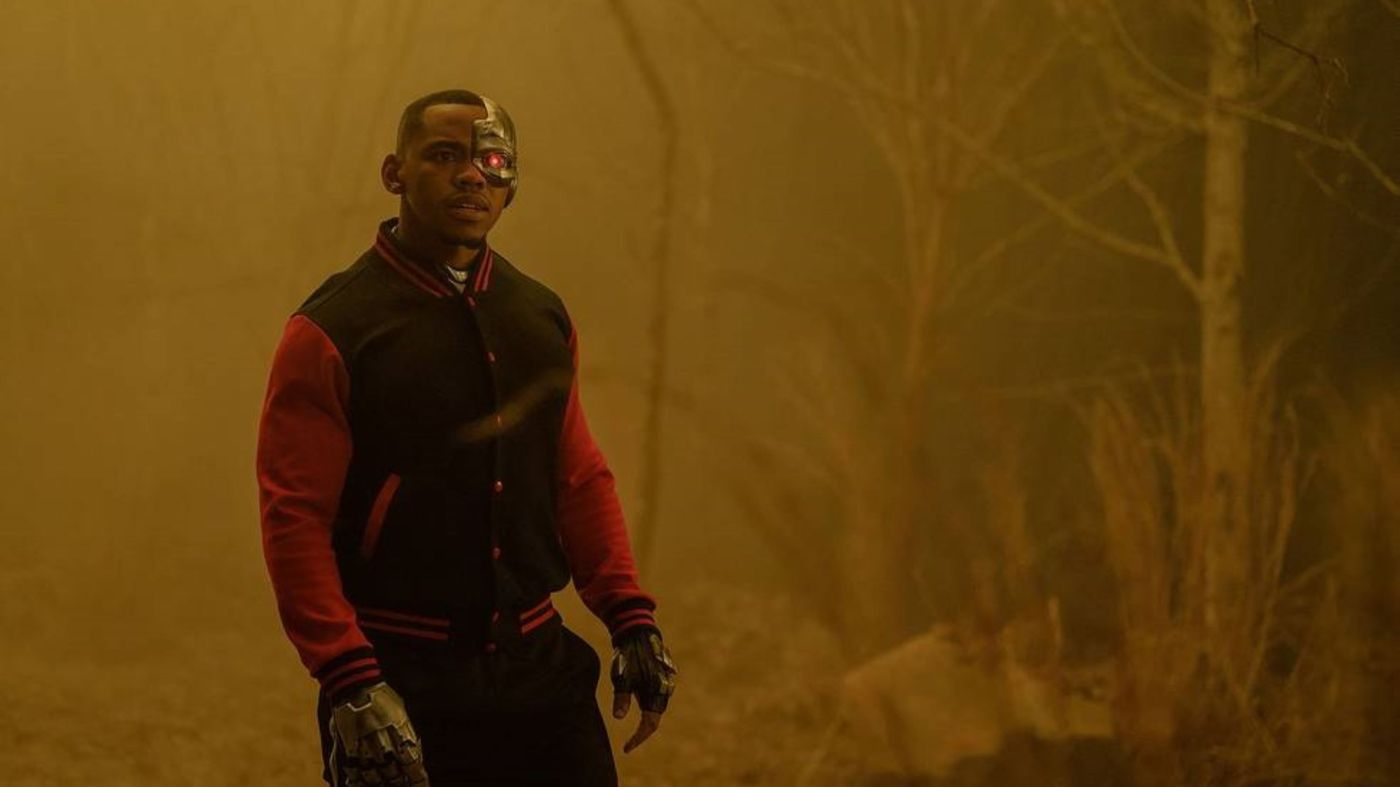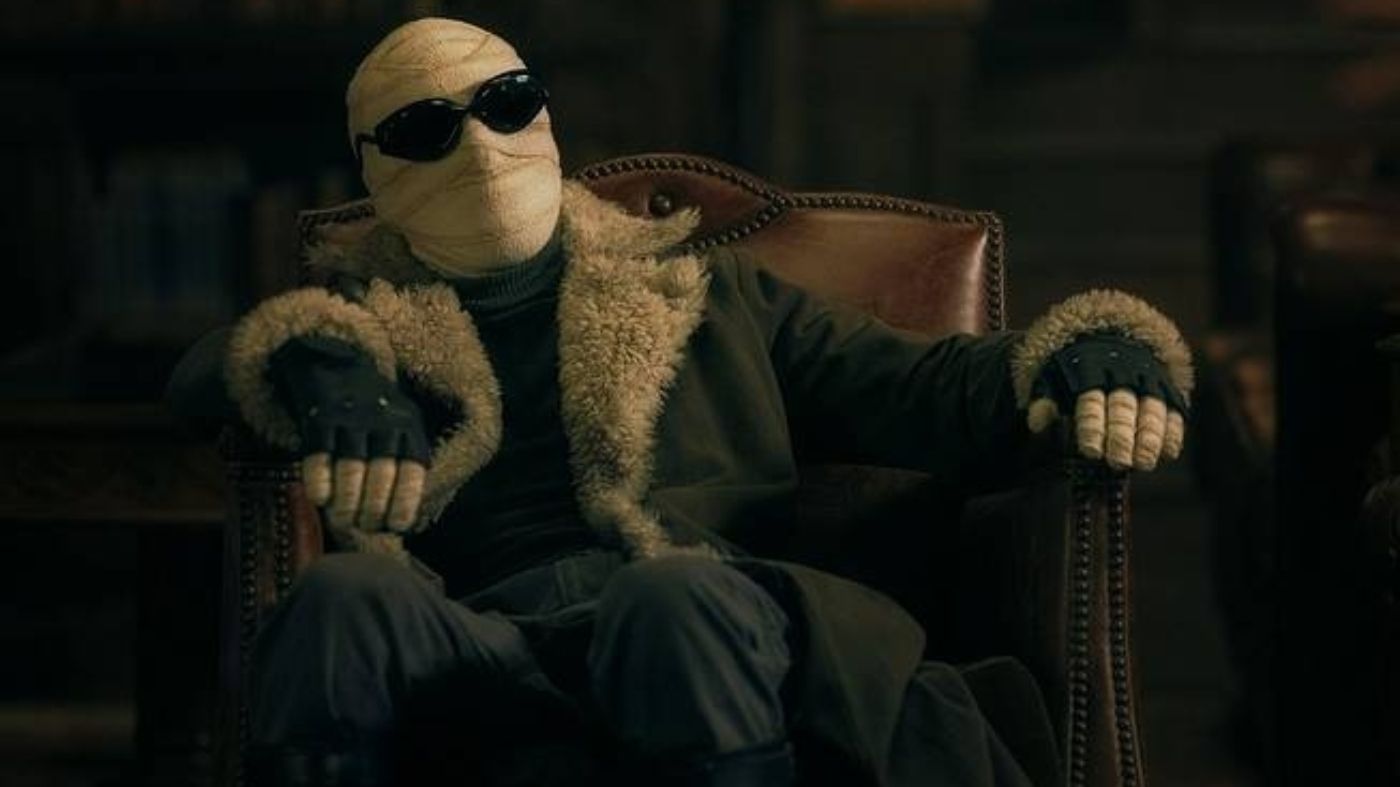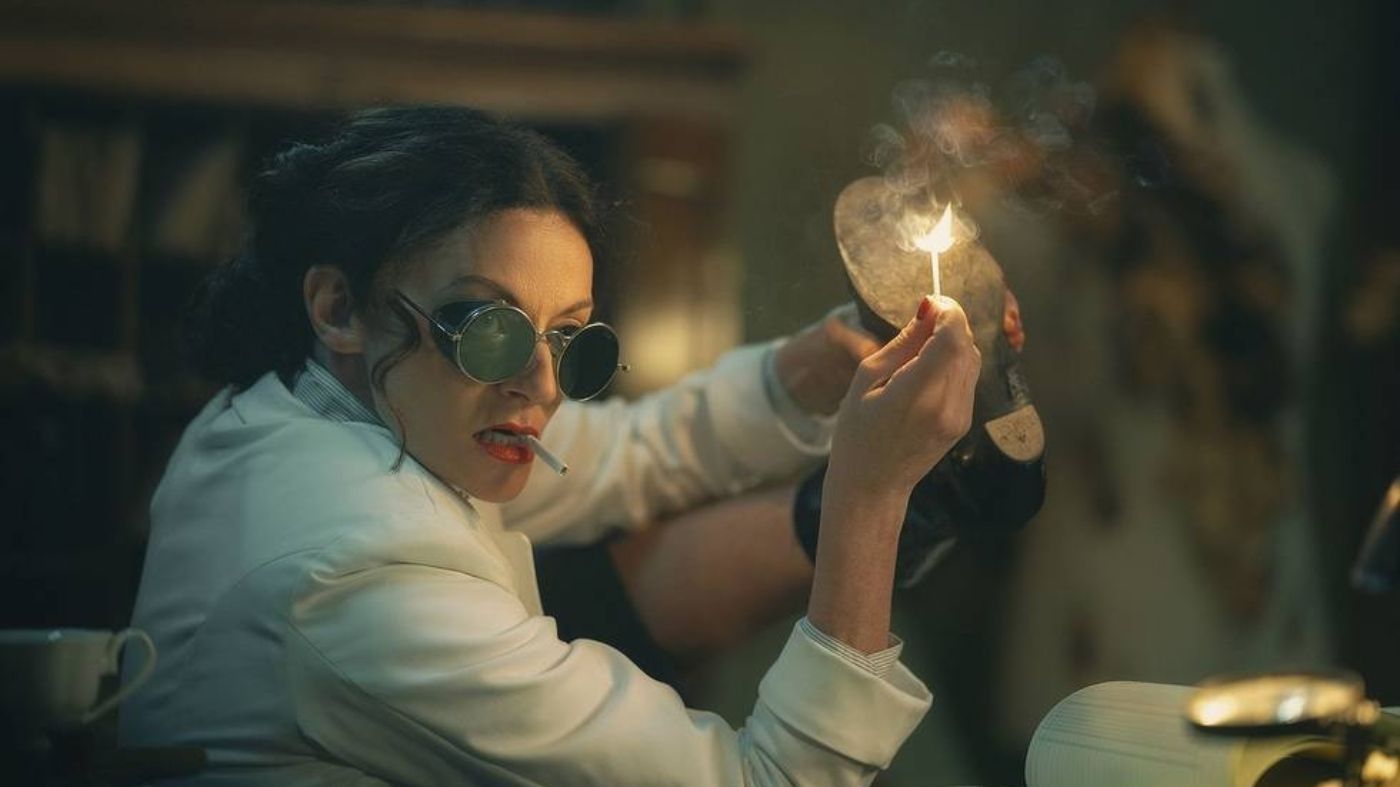The Doom Patrol is back for Season 4, and things are as complicated as ever. On one hand, they're fighting to stop a future filled with world-conquering zombie were-butts that are posed to wipe out almost all of humanity. On the other hand, they're fighting what might be an even more dangerous enemy: themselves.
The members of the Doom Patrol have always been their own biggest obstacles, and though each of them is trying to change in their own ways, they're still dealing with the fallout of Season 3. As such, it's worth taking a look back at the previous season, the journeys each character went on, and the questions they tried to answer along the way.
Niles' Death Kicks Off Season 3
The first episode of Season 3 of Doom Patrol functions as the finale for Season 2, whose shooting was cut short due to the pandemic lockdown. Dorothy Spinner (Abigail Shapiro) makes peace with the Candlemaker while the Doom Patrol faces their own inner demons. There are two significant outcomes from this episode; the first is the death of Doom Patrol's leader, Niles Caulder (Timothy Dalton). The other is that Crazy Jane (Diane Guerrero) confronts all the darkness that has been building up inside her selves for decades — and in that battle, the original and dormant child personality of Kay (Skye Roberts) wakes up to start taking a more active hand in things.
In the aftermath, Dorothy leaves the team to bury her father, Crazy Jane begins adjusting to her new situation, Cliff Steele (Brendan Fraser/Riley Shanahan) decides to spend more time with his daughter, Clara (Bethany Anne Lind), Larry Trainor (Matthew Bomer/Matthew Zuk) embraces the Negative Spirit within him and flew off into space, Victor Stone (Jovian Wade) is left broken-hearted by a woman more concerned with vengeance than love, and Rita Farr (April Bowlby)... is found wanting.
Niles Caulder has left one last mission for Rita — all Rita needs to do is answer an emergency hotline when it rings. When her cue comes, however, Rita falters. Whether her body fails her, or she fails herself, she isn't able to pick up the phone, and the call goes unanswered. In the meantime, a time machine has arrived in the town of Cloverton, and in it is the woman Niles considers to be one of his most dangerous foes: Madame Rouge (Michelle Gomez), who draws the team into a mystery that culminates in the rise of the Sisterhood of Dada, a group that asks the Doom Patrol important questions about themselves.
When Is Rita Farr?
Rita Farr's journey toward heroism is the thing that drives this entire season, and it's a journey that pulls everyone into her wake. It's easy to forget that, not counting Niles Caulder and Dorothy, Rita is the oldest member of the team — and also the one who has moved with the times the least. Her past guilt and traumas define her; she is so trapped by the past that she is unable to transform into anything else. The Doom Patrol takes a trip to the Codsville Mountain Resort, where they run into an old plot from the Brotherhood of Evil. Garguax the Decimator (Stephen Murphy) has been assigned to kill the Doom Patrol decades before they arrived. His assistant is still committed to the mission and activates the death ray that will kill them all. Before their death, however, when Rita tries to escape, she is stopped and trapped in the room by another version of herself. In the afterlife, Rita runs into a misshapen man who claims to know her, introducing himself as Malcolm (Micah Joe Parker).
After being resurrected (with the help of the Dorothy and the Dead Boy Detectives) and undergoing a brief stint of zombieism (more on that later), the Doom Patrol finds an amnesiac Madame Rogue — also known as Laura DeMille — in their home. Rita takes it upon herself to help Laura, who shows her a video from 1917 that features Rita herself. Rita is immediately filled with a new sense of purpose: a romantic vision of herself as a world-renowned time traveler, which spurs her into stealing the time travel machine. In the past, Rita immediately loses her memory and is captured by the Bureau of Normalcy, while Brotherhood of Evil leader The Brain (Riley Shanahan) sees the machine and copies its design. Rita meets the 1917 version of Madame Rogue, as well as the metahuman Sisterhood of Dada — including a man named Malcolm.
With her memories gone, Rita is, for the first time in her life, completely unburdened by her past, bonding with Laura and the Sisterhood in a way she never has with the Doom Patrol — she even falls in love with Malcolm. However, Madame Rouge betrays the team in favor of the Bureau, which leads to Malcolm's death and the team being turned into weapons. Rita then becomes a creature of vengeance. When Laura joins the Brotherhood of Evil and is tasked with traveling forward in time to steal Niles' technology, Rita follows her into the present, which restores her memories.
Rita is not the same as she once was. The pain of Madame Rouge's betrayal, the trauma of Malcolm's death, and the bond with the Sisterhood drive her now. Though many decades have passed, for Rita, the memories are fresh, and she's once again trapped in a time that has nothing to do with the present. It is not until Rita learns to let go — stopping herself from killing Madame Rouge when she has the chance — that she finally comes into her own. She grows into her own powers — quite literally, as she expands to a giant version of herself like her comic-book counterpart to save Cloverton from a rampaging giant robot with Cliff's brain in it. However, as we've seen in the opening episodes of Season 4, Rita is still alienated from her friends in the Doom Patrol, and she is now haunted by her failures as a leader as evidenced by a trip to the future. Rita's focus is being pulled in multiple directions, all of them at wildly varying points in time. Until she figures out when in time her heart truly lies, she's going to remain adrift.
What Is Cliff Steele?
The first question a frightened member of the Sisterhood asks Cliff, when they meet, is "What are you?" It is not a straightforward answer. Cliff is not exactly a robot — he still has a flesh-and-blood brain. There isn't enough of his human body remaining for him to be called a cyborg (and besides, the team already has one of those), but his humanity is still an essential part of him. However, in Season 3, the human failings of what's left of his brain become apparent — his robot body starts to malfunction, despite there being nothing wrong with the Robotman design. It's Cliff's brain that is failing, as it succumbs to Parkinson's Disease.
After being killed by Gargaux's assistant, Cliff finds himself with his father in the afterlife. While the meeting is not enough for Cliff to forgive his dad for the way he was raised, the encounter does help him realize that he needs help. He sees a doctor and receives his Parkinson's diagnosis, as well as medication for the same. The problem is, Cliff has grown used to quick fixes for his robot body. Cliff views his body in terms of efficiency — and that, combined with Cliff's own natural impatience, sees Cliff trying to speed his way through his own disease, taking all of his Parkinson's medication in one go, and getting extremely high during an important mission as a result.
Ultimately, the answer to "What are you?" is neither robot nor man — the thing that is currently defining the most harmful aspect of his life is the simple fact that Cliff is an addict. To be more precise, he's got an addictive personality. Whether it's booze, drugs, sex, celebrity, superheroics, or even just simple online distractions like freemium games and call girls, Cliff's life is ruined time and time again by things that make him feel special. When the Sisterhood of Dada releases the Eternal Flagellation, everyone in the world swaps places with their subconscious selves. Cliff's forces him to face his own failings, and be honest about his own reluctance to do the unglamorous parts of being a father. Before Cliff can deal with any of that, though, he is kidnapped by the Brain, who purchased blueprints for Cliff's body that Cliff himself had sold for extra cash. The Brain transfers himself into Cliff's body, and Cliff's brain ends up being put in a giant robot courtesy of Madame Rouge.
Housed in a giant robot, Cliff first makes his way to Clara to apologize for his behavior, then attempts to return to Cloverton. However, due to his Parkinson's, he loses control of the robot and nearly destroys the town until he is stopped by Rita and eventually returned to his more normal robot body. In Season 4, Cliff gets a step closer to his humanity — Silas Stone (Phil Morris) is able to restore Cliff's sense of touch. Cliff wants the first thing he touches to be his grandson, but events pull him away from that. In trying to save the world from an impending apocalypse, Laura takes Cliff on a mission that leads him to kill a man — and in the process, the first thing Cliff feels is that man's blood on his hands. Cliff is now faced with a different angle on the question of who he is: is he a superhero, or just the team's most efficient killer?
Who Is Crazy Jane?
As the woman with the most personalities in a single body, the question of identity has always been a major part of Jane's story. In Season 1, the question was about which of Jane's personalities was at the fore at any given moment. In Season 2, we got to learn more about Jane a little more, and what made her different from her other personas, or even the previous primary, Miranda. We learned that Jane was created to fulfill a role: to protect Kay, in a way that Miranda failed to do.
After the events of Season 2, Kay is awake, and more eager than ever to experience the world. Jane is there to help Kay, but the other personalities are wary of this, even afraid. They know that their entire purpose is to protect Kay, but if Kay is living for herself, that makes the rest of them obsolete. The persona known as Dr. Harrison (Catherine Carlen) is especially troubled — she feels things slipping out of her control, and blames Jane for everything that is happening. Jane, meanwhile, is doing her best for Kay. In the afterlife, Jane meets with Kay's grandmother and learns that she's named after the older woman. When Kay needed strength the most, that's when the persona of Jane was created in her mind. Kay's grandmother gives Jane words of encouragement, but Jane's meeting with the Sisterhood soon after causes her to question herself.
During the Eternal Flagellation, Kay comes into the real world and meets the other members of the Doom Patrol for the first time. She confronts Jane and tells her that she wishes Jane and the other personalities didn't exist. Jane later finds that the other personas have abandoned the Underground — led by Dr. Harrison, they have taken up an offer from the Fog to leave the Underground and try to live lives away from Kay. However, without Kay, the personas have no reason to exist and are slowly decaying. To save their lives, Jane makes a deal with Dr. Harrison: Jane will give up control, and let Dr. Harrison take charge as primary.
At the start of Season 4, instead of finding a way to keep Kay safe, Dr. Harrison joins the team's superhero missions to study the psyches of her teammates, but a glimpse into the future shows Dr. Harrison that this only leads to their deaths. Jane takes control as primary once more, leaving her with the mystery of why Kay is hiding from the other personas. The only clue Jane has is a bag full of puzzle pieces, a symbol of the Underground's fragmented nature, and it looks like Jane has more to learn about who she is before she can put herself completely together again.
Why Is Cyborg?
Victor Stone's question is not just about him — it's about his alter-ego, Cyborg. It's not the Sisterhood who first poses the question to him; it's his mother, Elinore Stone (Charmin Lee). From the beginning, Elinore is presented as the reason that Victor Stone became Cyborg, a Justice League-level superhero here to save the world. Season 1 gave us, and Victor himself, cause to doubt that story, but it turned out that it did indeed happen the way Victor remembered it. However, there's more to the story than he was led to believe.
When Victor goes to the afterlife, the person he meets is his mother. The two spend some time together hiking, and while they talk, Elinore lets slip that Victor becoming a cybernetic weapon wasn't the only way to save him. When Victor returns to life, he confronts his father about the very same question: was there another way? Silas admits that there were two kinds of experimental surgeries that could have been done — one, the Cyborg cybernetics. The other? Synthetic skin, which would have allowed Victor to lead a normal life, and that begs the question: why was the Stones' son turned into Cyborg, instead of regular old Victor Stone? Victor does his own research, and finds that it's not too late for him — it is possible for him to have surgery that will make him look normal, but at the cost of his superpowers. Vic chooses to have the surgery, but before he can go in for it, the Eternal Flagellation begins.
We learn that, as a child, Victor was almost arrested by a racist shopkeeper for simply making a mess of toys while searching for a Black superhero. Victor's father admonished him and picked out a General Tony action figure — a Black soldier, telling Victor to be more like him. It is this action figure that Victor trades places with during the Eternal Flagellation. When the two confront each other, General Tony tells Victor how that memory marked the moment Victor lost his childhood — how he became more of a strong, disciplined soldier from that point on, especially after he became Cyborg. After the Eternal Flagellation, Victor goes through with the surgery, giving up his cybernetics to become a normal person. His father is there to greet him and answers the question of why Cyborg was, talking about the moment a security guard nearly arrested Silas on Star Labs property when Silas had forgotten his keys — a sobering and traumatizing moment that led Silas to want to create a protective armor around Victor, to protect him against prejudice. It is not a reasoning that Victor appreciated, nor does he appreciate what his father turned him into.
Now that he knows why he was Cyborg, Victor has set out to discover who he is without the machine. Without powers, however, he's so far been less than helpful to the team, who now view him as a liability. The question now is, if Victor has no superpowers, why is he trying so hard to be a part of a superhero team? Why is he still there, and why has he made no progress toward truly living his own life?
Where Is Larry Trainor?
Larry Trainor (Matt Bomer/Matthew Zuk) is never asked that question directly. It is asked of him — by his wife, by his children, by his lover, and, when he flew off into space, by his friends. Even when he is physically present, his spirit is miles away. Larry never appreciates the people in his life before he loses them — distancing himself is the thing he does best. Out in space, the Negative Spirit somehow manages to find a way home — and in doing so, leaves Larry behind, back on Earth with no explanation. Larry grows what initially seems to be a tumor, but turns out to be the child of himself and the Negative Spirit. The tumor eventually grows into a cocoon, which Larry abandons in the woods on Laura's advice.
Throughout Season 3, Larry is forced to confront the people he abandoned. First his friends: he returns home to find them dead, which breaks his mind a little bit, enough to bandage them up and play house with them around Doom Manor. During the team's first encounter with the Fog, his son Paul (John Getz) appears out of thin air, babbling incoherently. Larry nurses Paul back to health, although the two ultimately part ways. In the Eternal Flagellation, when Larry confronts his subconscious self, the two talk about that wedding day when Larry committed himself to hiding who he truly was. Larry is made to realize how afraid of love he is, how he thinks he's not worthy of it, and that that's why he's spent his life distancing himself from people.
After the Flagellation, Larry returns to the woods and rescues the cocoon. After a few difficulties, Larry is finally able to remove his bandages and let the spirit in, bonding him with a new Negative Spirit named Kreeg, granting Larry new powers and new levels of control.
Now, Larry is doing his best to be there for his strange new son, but Kreeg's future self has present-day Kreeg disturbed. Larry is finding that being there for someone is harder than it looks — but so far, he's sticking through it.
Which Laura DeMille Is It?
Though we've only had one full season with her so far, we have seen many versions of Laura DeMille. The kindly bureaucratic rebel and member of the Sisterhood of Dada. The conflicted Madame Rouge. The more unrepentant Madame Rogue who is so manipulative and evil even Niles Caulder despises her. And Shannon, the amnesiac version of Laura who is unburdened by her past.
To go chronologically according to Laura's own timeline, we first see her as a well-meaning member of the Bureau of Normalcy. Laura is a metahuman herself, doing her best to work within the system to save other metahumans from being turned into weapons. She bonds with the Sisterhood of Dada, joining their art and reveling in secrecy when she can. However, when her secret is threatened, Laura throws the Sisterhood under the bus. She rats them out to the Bureau, labels them all as weapons, and stands by as the group rebels — which ends in the death of Malcolm, earning Rita's undying hatred.
Eventually, however, life in the Bureau does not work out for her, despite her actions. She then turns to villainy, as Madame Rouge, during which time she applies for membership in the Brotherhood of Evil. The Brain, who has recreated a time machine based on the designs he made when Rita came to 1917, assigns Madame Rouge the task of traveling to 2021 and stealing Niles Caulder's technology. However, as we know, Laura lost her memory when she arrived in 2021 and knew only two things: that she needed to find Niles Caulder, and that the Sisterhood of Dada was a danger to her.
Eventually, her memories return to her. In a confrontation, she is given one chance to make amends for the harm she caused: to release the Malcolm-shaped bird that would begin the Eternal Flagellation. Laura refuses to admit to any wrongdoing and refuses to open the gate — which destroys Rita's fantasy of instigating a heroic redemption scene. Laura tries to rejoin the Brotherhood of Evil, who have her kidnap Cliff for the Brain. The Brain, however, betrays Laura, and orders Monsieur Mallah to kill her and what remains of Cliff — leading to Laura placing Cliff's brain in the giant robot. A remorseful Laura presents herself to Rita, who chooses at the last minute to not take her revenge on Laura. Laura, however, can't bear the weight of all that she's done. She embraces the memory loss that the time travel machine gives. Even in the present, in Season 4, she chooses to have her memories constantly re-erased.
When the team elects her as leader, however, her more ruthless tendencies begin to crop up again. She manipulates the team and coerces Cliff into becoming a killer — a weapon — with which she tries to save the world. Her old tendencies have started to creep back in, with the memories she is no longer in a position to erase. There are many versions of Madame Rogue — which is the one we're going to end up with?
Doom Patrol carries all these questions over into its fourth season. While some questions are answered, others are still up in the air — and all of them have repercussions as the team tries to find some resolution before their story comes to a close.

